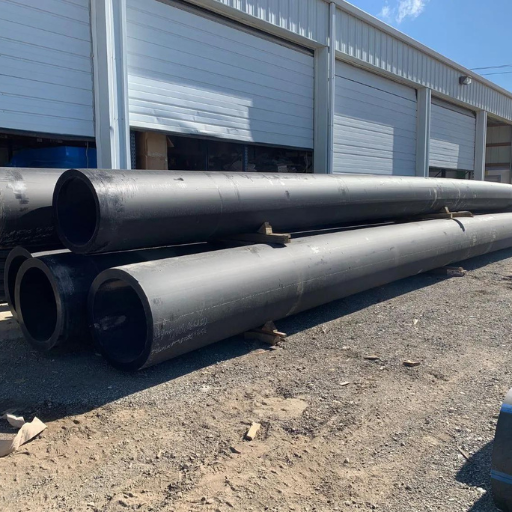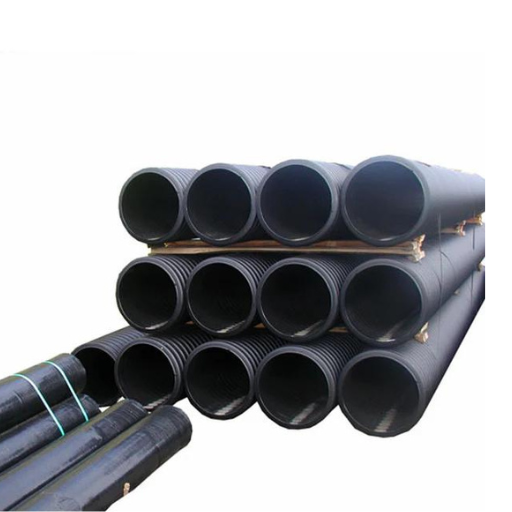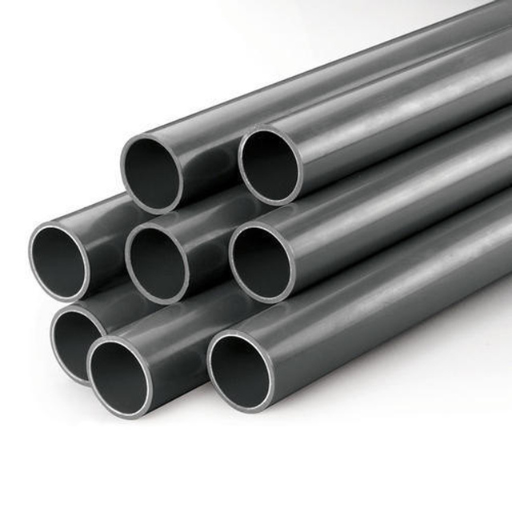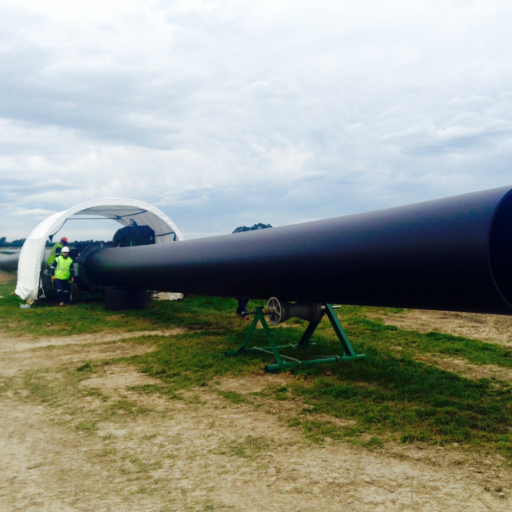High-Density Polyethylene (HDPE) pipe is increasingly becoming a go-to solution in various industries due to its impressive durability and versatility. Whether for plumbing systems, wastewater management, or industrial applications, HDPE pipe offers significant advantages over traditional materials. In this blog, we will explore the various uses of HDPE pipe, its benefits, and essential considerations for selection and installation. By the end of the article, readers will understand why HDPE pipe is an ideal choice for a range of applications, helping to inform decisions for both current and future projects.
What is HDPE Pipe Used For?

Applications of HDPE Pipe: In Detail
HDPE pipe has a wide range of industries. It is commonly used because it is known for its excellent resistance to environmental stress, corrosion, and chemicals. Below are just a few examples:
- Water Supply Systems: The material does not interact with the fluid, conveying safe drinking water.
- Sewage and Drainage: Sewage and drainage have a longer lifespan than leaking alternatives for municipal and industrial wastewater systems.
- Agriculture: Irrigation through this medium aids in water conservation while also preventing soil erosion that can compromise its fertiand preventsications: For chemical transfer anhers, HDPE provides a reliable solution for high pressure environments.
Knowing these applications therefore stakeholders can make full use of HDPE pipes in any project for better performance maximization and reduced costs as well.
Common Uses of High-Density Polyethylene Pipe
High-density polyethylene piping (HDPE) pipes are widely known to be highly versatile across diverse sectors. Here are some instances:
- Infrastructure Development: HDPE is often used during the the construction of underground utilities like gas distribution lines or water main pipes due to its resilience to soil movement requirements and strength.
- Stormwater Management: Smooth interior surfaces prevent blockages or maintenance issues associated with such tubes, which can lead to flooding but still facilitate stormwater events. Drainage efficiently are added by these HDPE pipes.
- Mining & Dewatering: Thanks to their resistance to abrasion and chemicals, they can be applied within the mining industry where slurry transportation may be necessary or only dewatering systems, including when constructing tailings or waste storage ponds.
These various applications demonstrate how long-lasting solutions can be found by employing HDPE in public infrastructure projects and industrial settings.
Why Select PE Pipe for Your Projects?
Various benefits come with selecting Polyethylene (PE) pipe for your projects. First off, PE pipes are light-duty, hence easy to handle during installation, reducing labor costs. Additionally, they last long due to high corrosion, abrasion andThey alsoces although low on maintenance. Furthermore, the ease at which these pipes can blaced in challenging terrains without fittings enables them to lower the pipe’s system inefficiency. Lastly, its internal smoothness is outstanding for its excellent flow ability, resulting in reduced energy consumption during pumping operations. This makes PE pipe a good choice for many types of infrastructure and industrial applications.
What are the Benefits of HDPE Pipe?
Durability and Longevity of High-Density Polyethylene (HDPE) Pipes
The durability and longevity of HDPE pipes are far more excellent than that of conventional pipe materials. This is because they resist some environmental conditions like corrosion, UV radiation, and impact damages, resulting in over 50 years of service life if properly installed and maintained. Their composition allows them to withstand variations in temperature and pressure, making them suitable for harsh weather conditions/high-stress environments. In this regard, it can stand strain without yielding, thus improving its lifespan even under dynamic situations due to its flexibility. This reduces the need for frequent replacements while reducing lifecycle costs, indicating that such pipelines are capital investments with measurable returns.
Polyethylene Pipe’s Corrosion Resistance
Polyethylene (PE) pipe resists corrosion,, making it a preferred choice in various sectors such as water supply systems and sewage management units. However, PE does not rust through this means, unlike traditional materials like iron or steel, which rust when exposed to moisture or chemicals. Such resistance helps maintain the integrity of the conduit system, hence extending its lifespan without any external treatments or coatings required. Additionally, a smooth inner surface minimizes material build-up that could hinder flow, thereby enhancing efficacy through decreased maintenance requirements. All these features make polyethylene pipe widely used in several public works projects because they resist corrosive processes.
Affordability and Effectiveness of HDPE
High-density polyethylene (HDPE) pipes are some of the most affordable and effective options across many applications today due to specific physical properties they possess. Its low weight enables easy handling during transportation thus substantially reducing labor costs related to installation.The fact that HDPE does not decay also means there is no need for extra expenses on repair since it does not leak either. Also, the high level of endurance ensures sustainability by requiring less number of replacements than other types hence minimizing lifetime costs. They are also built with a smooth interior surface that enables optimal flow rates and reduces energy consumption in pumping applications, leading to overall system efficiency. When all these characteristics are considered, greenfield and brownfield infrastructure projects can see a lot of savings in the long run, apart from increased productivity with HDPE pipes.
What are the Features of HDPE Pipe?

Impact Resistance and Flexibility of PE Pipe
Polyethylene (PE) pipes are known for their excellent resistance to impact as well as flexibility, which makes them applicable in many difficult conditions. In the event that pipes come into contact with external forces oIfround movement, they should be able to sustain an impact without breaking or cracking even at unexpected moments. This durability is accompanied by the natural flexibility of PE that lets it curve and adapt to the terrain, thus making it more useful, especially in lands with unsteady soil or that are prone to earthquakes. Furthermore, the ability of polyethylene to bend eases the process of installing this kind of piping and lowers the possibility of connection fault. These aspects improve both the structural integrity and reliafaultsy of any pipe system during dynamic conditions.
Environmental Factors: UV Resistance
The HDPE pipes have excellent resistance against ultraviolet rays,, essential in applications exposed to direct sunlight. Unlike materials that degrade and lose their strength due to UV exposure, the stability of HDPE remains constant over time, maintaining its strength. With this in mind, these tubes do not become brittle or lose their malleability, making it possible for them to last long outdoors. Moreover, HDPE is ,lightweight, allowing easy handling and installation,, making it applicable across different environments. For optimum performance under open weather conditions to remain effective for water supply systems and drainage applications, such stabilizers must be added during the manufacturing stage.
Simplified Installation And Less Fittings
HDPE pipes reduce the fittings needed when installed,, which is a major advantage. This mainly arises from its property where runs can be long and continuous without additional joints. Fewer fittings also allow faster installation rates while reducing risks related to leaks on these pipelines, thereby enhancing dependability in general perspective within the entire piping system. Additionally, its lightweight nature makes handling HDPE simpler, thereby enabling contractors to move more easily with pipes at construction sites. The simplification in installation technique can lead to significant time and financial savings that enhance the efficiency with which projects are completed.
How is HDPE Pipe Manufactured?

Extrusion Process for HDPE Pipes
The first step in the extrusion process of HDPE pipes is selecting high-density polyethylene resin and putting it into a hopper. Within a barrel, the resin is heated and melted, after which mixing ensures even consistency. On reaching the required temperature range, the material maintains its shape by passing it through a die as a continuous pipe. When exiting the die, it is cooled by water or air, resulting in new pipe forms. Then, they are cut to specified lengths. Pipe pressure testing and dimensional checks are performed to ensure compliance with industry standards for quality assurance. These processes produce smooth-walled pipes with exceptional strength, flexibility, and environmental stress-cracking resistance.
Properties of High-Density Polyethylene Polymer
High-density polyethylene (HDPE) polymer properties are one reason this material is used in many applications. To start with, its high tensile strength provides durability and makes it resistant to impacts, making it ideal for applications that demand robustness. Additionally, HDPE has strong chemical resistance, which allows it not to be affected by harsh materials thrown at it.
Additionally, its folding property can be increased so that even under changeable weather conditions,, there will be no possibility of destruction during installation; so,, these tubes are very adaptable for various atmospheres. Moreover, HDPE’s low moisture absorption ratio does not promote wetness within itself, thus enhancing its service life.
Another reason it is used outdoors when exposed to sunlight is its UV resistance feature, which makes the material last longer. This makes Polyethylene an appropriate choice for containers. This implies that this substance can be applied successfully across multiple manufacturing sectors due to such qualities.
Welding Techniques Employed in HDPE Piping Systems
Methods of welding employed in HDPE pipe systems play an essential part in creating joint connections that are tight enough not to leak water through them. Some common ones include butt fusion, socket fusion, and electrofusion.
Butt fusion is when two pipe ends are heated up to a specific temperature and pressed together to form one joint. This method is used mainly for large-diameter pipes and has become popular because it is reliable and makes strong joints.
Electrofusion involves special fittings with heating elements installed in them. Once an electric current is applied, heat is generated that melts the surfaces of the pipes, creating a tight bond. This method can be used where there is limited space for welding.
For the socket fusion technique, both the fitting and pipe end are subjected to preheating before they are joined together. This method is most often used for smaller diameter pipes and provides quick and reliable connections.
Each technique has specific advantages depending on factors such as pipe size, installation environment, or desired strength of joints during application. Manufacturing excellent welded connections that will last long in HDPE piping systems requires proper training and the right tools.
What Types of HDPE Applications Exist?

Using high-density polyethylene (HDPE) for water supply and potable water systems
Therefore, The HDPE material is a good choice for water supply and potable water systems as it is strong and is corrosion resistant. In addition, it withstands high pressures without breaking down and and becomes the best material to safely convey drinking water. Moreover, they are light in weight,, making their installation easy and having low transportation costs from factory. Because of their excellent tensile properties, these tubes can also be used under various conditions like chemical resistance or environmental stress. Thus, HDPE provides a suitable solution when you want all the safety standards for drinking water, but on the other hand, you have to spend less money if you use it in some applications of supplying streams.
HDPE Pipes in Drainage Systems
This is why I think that HDPE would be very suitable for drainage systems, as it is capable of resisting chemicals and is flexible. As such, this means that waste water from diverse sources will not influence such materials,, which is applicable in residential homes and commercial buildings. Its interior surface also makes flow easier by reducing the chances of blockages while, at the same time, its light nature makes installation simple, thereby cutting down on labor expenses. Secondly, durability implies that anything made using HDPE will last long, even under harsh environments found in drainage systems. Hence, if any person wants his sewer system to be effective, he should opt for HDPE.
HDPE Piping System for Gas Distribution
However, according to my experiences with gas distribution systems, one possible answer may involve high-density polyethylene (HDPE) pipes, which could be used due to their ability to not corrode due to exposure to fluctuating temperatures. Also, these pipes are light and thus can be transported easily through urban areas with limited space or rural locations, which are more expensive mainly because of right-of-way concerns, among other things like this lightweight concept, etcetera. I also like these pipes because they can take this pressure when used in gas distribution, and their flexibility allows for complicated pipe networks with complex topographies. Safety is the next factor to consider here; hence, HDPE is the best material for distributing natural gas lines because it does not emit poisonous gases into the atmosphere and cannot be broken under tension. Consequently, I believe in HDPE as a suitable and effective alternative for gas distribution systems.
Reference sources
- PSC Companies: What is High-Density Polyethylene (HDPE) Pipe Used For?
- Wikipedia: HDPE Pipe
- Shell Polymers: Five Things You Need to Know About HDPE Pipe
These sources should help validate the feasibility and various applications of HDPE pipes for your readers.
Frequently Asked Questions (FAQs)

Q: Can HDPE pipes be used for food-grade applications?
A: Yes, HDPE pipes, which are constructed from virgin material made from food-grade polyethylene, meet the requirements of food-grade applications, ensuring the safety of the food supply system.
Q: What is the lifespan of HDPE pipes?
A: In various pipeline applications, HDPE pipes last for more than 50 years, making them a reliable choice.
Q: How are HDPE pipes joined together?
A: HDPE pipes are typically joined together using heat fusion techniques, which provide solid and leak-proof connections between pipes and fittings.
Q: What are the advantages of using HDPE over concrete or steel pipes?
A: Compared to concrete or steel materials, high-density polyethylene (HDPE) pipe is lighter, cheaper, and does not corrode easily; hence, it can be installed and maintained easily.
Q: Is HDPE pipe environmentally friendly?
A: Yes, since it is a durable material that reduces the need for frequent replacements, leading to a sustainable environment due to its recyclable nature.
Q: In what forms can HDPE be manufactured?
- Depending on the application, various forms of high-density polyethylene (HDPE), including spiral polyethylene and standard solid pipes, can be made.





